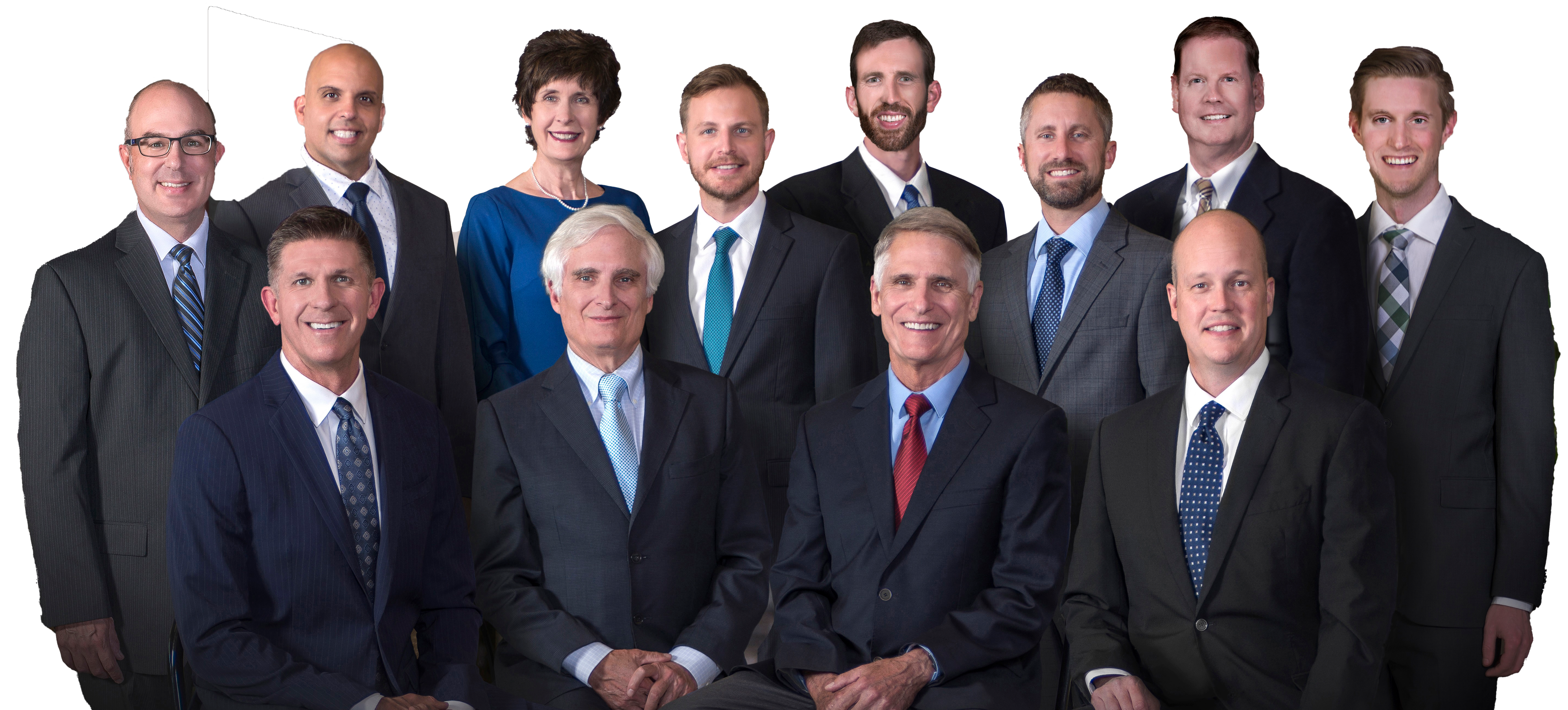
Eyelid Surgery
Having an eyelid problem can be painful, limit your vision, and affect your appearance. Many people have upper and lower eyelid problems. They may include droopy upper eyelids, extra eyelid skin or eyelids that turn inward or outward. Fortunately, our ophthalmologists can treat many types of eyelid problems with surgery.
Common procedures include removing redundant eyelid skin (blepharoplasty), raising a drooping eyelid (ptosis repair), and correcting an eyelid that is turning outward (ectropion repair) or inward (entropion repair).
Our experienced and knowledgeable doctors, Dr. Clark and Dr. Blodgett, are here to help you with all your oculoplastic and eyelid surgery needs.

David W. Blodgett, M.D.

Thomas J.E. Clark, M.D.
To schedule an appointment with Dr. Blodgett or Dr. Clark, call 402.484.9000.

Ptosis correction
Ptosis is when one or both of your upper eyelids droop. It can limit your peripheral (side) or central (straight ahead) vision. If you have ptosis in one eye only, your face may look uneven. If both eyelids droop, you can look tired.
Someone can be born with ptosis. In this case, a child may lift their eyebrows or tilt their head back to be able to see. Ptosis can seriously limit the development of sharp vision. When a child’s eyelids are droopy or incorrectly shaped, both eyes usually do not focus evenly. He or she may need eyeglasses to see clearly.
After a complete eye exam, the child’s ophthalmologist may recommend surgery to fix the eyelid. This surgery is usually done during the preschool years (ages 3 to 5).
Ptosis can also develop later in adult life. It sometimes begins after having other types of eye surgery or eyelid swelling.
With ptosis surgery, the ophthalmologist strengthens the eyelid muscle by shortening it. This helps lift the droopy lid, improving vision as well as the eye’s appearance.
Ectropion/entropion repair
When the lower eyelid droops down and turns outward, it is called ectropion. This can happen due to age, skin disease, a tumor, trauma, or a burn to the eyelid. Ectropion can make your eyes dry, watery and sensitive to light and wind.
If the lower eyelid turns in toward the eyeball it is called entropion. This condition can develop due to age, infection, or scarring inside the eyelid. When the eyelid turns inward, your eyelashes and skin may rub against the eye. This can make your eye red, watery and very irritated. If it is not treated, entropion may also lead to an infection on your cornea (the clear dome-shaped window at the front of the eye).
Surgery for ectropion and entropion returns the eyelid to its normal position. This helps reduce painful and irritating symptoms and protects your eye.

Functional vs Cosmetic eyelid surgery
A functional and a cosmetic blepharoplasty are essentially the same thing. The only difference is who pays. Upper eyelid blepharoplasty is frequently covered under insurance but may get denied. In that case, it becomes cosmetic as the patient is responsible for the cost. Lower eyelid blepharoplasty is always considered cosmetic and the patient is responsible.
For a patient to qualify for insurance coverage, a few criteria need to be met:
- The patient must be symptomatic (blurred vision, eye fatigue, headaches towards the end of the day, eye irritation, etc)
- Visual field testing demonstrates a significant defect, which improves by taping the lid skin out of the way
- The eye exam will generally show lid skin touching the lashes when the brow muscles are relaxed
What to expect from eyelid surgery
Nearly all eyelid surgery is done as an outpatient procedure. Local anesthesia will be used to numb your eye and the area around it.
Before surgery, your ophthalmologist will do a complete eye exam and talk with you about treatment options. He or she may also take photos of your eyes and test your side vision.




